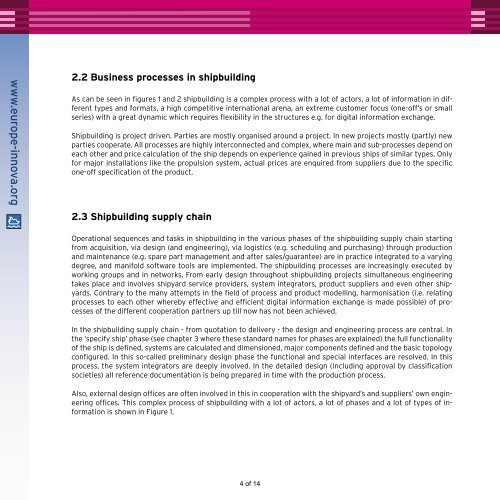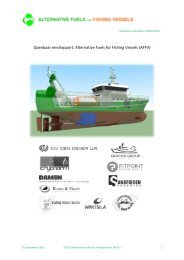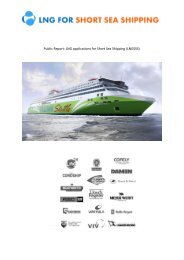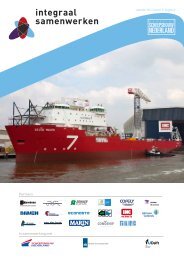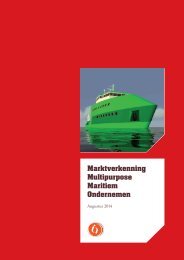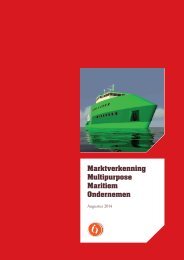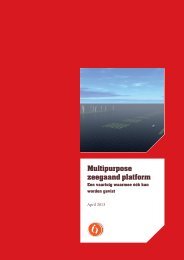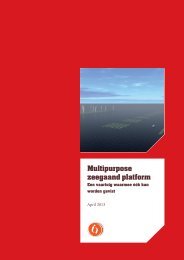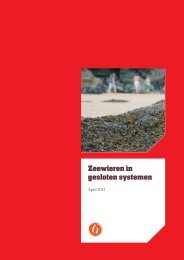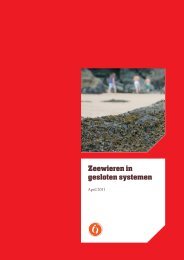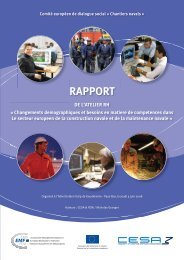Euromind (2009)
Creating an innovative European Open Maritime Industry through facilitating integration of standards into new business practices & services.
Creating an innovative European Open Maritime Industry through facilitating integration of standards into new business practices & services.
Create successful ePaper yourself
Turn your PDF publications into a flip-book with our unique Google optimized e-Paper software.
www.europe-innova.org<br />
Stand-Inn<br />
Innovafun<br />
Steppin<br />
Depuis<br />
<strong>Euromind</strong><br />
2.2 Business processes in shipbuilding<br />
As can be seen in figures 1 and 2 shipbuilding is a complex process with a lot of actors, a lot of information in different<br />
types and formats, a high competitive international arena, an extreme customer focus (one-off’s or small<br />
series) with a great dynamic which requires flexibility in the structures e.g. for digital information exchange.<br />
Shipbuilding is project driven. Parties are mostly organised around a project. In new projects mostly (partly) new<br />
parties cooperate. All processes are highly interconnected and complex, where main and sub-processes depend on<br />
each other and price calculation of the ship depends on experience gained in previous ships of similar types. Only<br />
for major installations like the propulsion system, actual prices are enquired from suppliers due to the specific<br />
one-off specification of the product.<br />
2.3 Shipbuilding supply chain<br />
BioHealth<br />
Operational sequences and tasks in shipbuilding in the various phases of the shipbuilding supply chain starting<br />
from acquisition, via design (and engineering), via logistics (e.g. scheduling and purchasing) through production<br />
and maintenance (e.g. spare part management and after sales/guarantee) are in practice integrated to a varying<br />
degree, and manifold software tools are implemented. The shipbuilding processes are increasingly executed by<br />
working groups and in networks. From early design throughout shipbuilding projects simultaneous engineering<br />
takes place and involves shipyard service providers, system integrators, product suppliers and even other shipyards.<br />
Contrary to the many attempts in the field of process and product modelling, harmonisation (i.e. relating<br />
processes to each other whereby effective and efficient digital information exchange is made possible) of processes<br />
of the different cooperation partners up till now has not been achieved.<br />
In the shipbuilding supply chain - from quotation to delivery - the design and engineering process are central. In<br />
the ‘specify ship’ phase (see chapter 3 where these standard names for phases are explained) the full functionality<br />
of the ship is defined, systems are calculated and dimensioned, major components defined and the basic topology<br />
configured. In this so-called preliminary design phase the functional and special interfaces are resolved. In this<br />
process, the system integrators are deeply involved. In the detailed design (including approval by classification<br />
societies) all reference documentation is being prepared in time with the production process.<br />
Also, external design offices are often involved in this in cooperation with the shipyard’s and suppliers’ own engineering<br />
offices. This complex process of shipbuilding with a lot of actors, a lot of phases and a lot of types of information<br />
is shown in Figure 1.<br />
4 of 14


